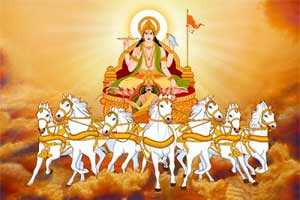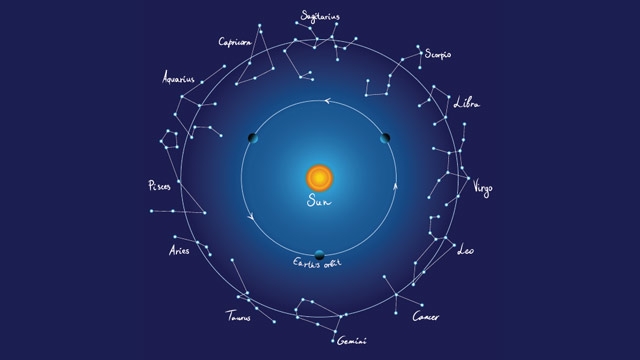 Makara Sankranti is celebration of the entry of the Sun into Capricorn. In India, it is the entry of the Sun, (Surya) into zodicac sign called Makara, hence, it is called Makara Sankranti. This festival marks the end of Winter and the beginning of Spring. It is a day of celebration, the commencement of harvest, and special foods are prepared (pongal) and gifts are exchanged – sometimes, the gifting of idols to family and friends. It is important to feed people on this day, as the gifts of the Earth belong to all. Makara Sankranti 2021 date is January 14.
Makara Sankranti is celebration of the entry of the Sun into Capricorn. In India, it is the entry of the Sun, (Surya) into zodicac sign called Makara, hence, it is called Makara Sankranti. This festival marks the end of Winter and the beginning of Spring. It is a day of celebration, the commencement of harvest, and special foods are prepared (pongal) and gifts are exchanged – sometimes, the gifting of idols to family and friends. It is important to feed people on this day, as the gifts of the Earth belong to all. Makara Sankranti 2021 date is January 14.
Makara Sankranti is an auspicious day based on the movement of the Sun (Surya). ‘Makar’ or ‘Makara’ refers to ‘Makara house’ – the zodiac sign corresponding to Capricorn (in Vedic Astrology). ‘Sankranti’ in Sanskrit means ‘to cross into’ or the day when the Sun moves from one zodiac sign to another. So Makar Sankranti is the day when the Sun enters into the zodiac sign of Capricorn. It is also known as Uttarayana, the entry of sun into the Northern Hemisphere. The six-month long Uttarayana begins on this day.
Makara Sankranti is usually observed on January 14 or January 15.
Usually the day of Hindu celebrations varies from year to year in English (Gregorian) Calendar. The Hindu calendar is based on the movement of the Moon and therefore it is a lunar calendar. So you will observe that every year, there are changes in the dates of various celebrations with corresponding English (Gregorian) Calendar. However, Makara Sankranti is based on the movement of the Sun, and therefore it has mostly a fixed date, year in, year out.
Depending on the movement of the sun from the Southern Hemisphere to the Northern Hemisphere, the date of Makara Sankranti progresses; i.e., a decade ago Makara Sankranti was observed on January 12th and later on 13th. Now the observance occurs on January 14th or 15th. In the future years it will be observed on January 16th.
Deity worshipped on Makar Sankranti
Lord Surya (the Sun) is worshipped on the Makar Sankranti day and is a form of nature worship. This is because every living and non-living being merges with Brahman (the Source of The All) and the Sun is the visible form of Brahman – the Brahman that can be seen. So the Sun is called Pratyaksha-Brahman (that which can be seen).
It was mentioned that when the Sun enters the Northern Hemisphere, this is called Uttarayana. The full name is Uttarayana Punyakalam, being punya+kalam = good, auspicious + time. This lasts for six months. This period is ideal for all kind of auspicious activities. Makara Sankranti also heralds the arrival of spring. Special food made from freshly harvested grains is consumed and shared on the day.
Makar Sankranti in Hindu Scriptures – Stories
One of the most important myths associated with Uttarayana is the death of Bhishma (grandsire of the Kauravas) in the Mahabharata. This one called Bhishma chose to leave his body on the occasion of Uttarayana. (Bhisma had got a boon from his father that he will only die when he wishes.) It is therefore taught that people who die during Uttarayana Punyakalam (time when the Sun is in the Northern Hemisphere) do not come back. They do not reincarnate; suggesting merger with Brahman, thus ending the cycle of rebirth.
Legend also has it that Lord Vishnu buried Asuras (demons) on this day beneath the Mandara Mountain. It signifies the end of evil and the dawn of righteousness.
Puranas state that on Makar Sankranti day, Surya visits Lord Shani. Lord Shani is the son of Surya, as stated in Shani Gayatri mantra:
Om Shanischaraya vidmahe
Surya putraya dheemahe
Tanno manda prachodayat.
(Surya putraya, meaning Son of the Sun)
Significance of Makara Sankranti
Every year Makar Sankranti is celebrated in the month of January to mark the winter solstice. It is also one of the largely celebrated Hindu festivals of India and Nepal which is celebrated differently in various cultures but the common practice on the day of Makar Sankranti is flying colourful kites.This festival is dedicated to the Hindu religious sun god Surya. This significance of Surya is traceable to the Vedic texts, particularly the Gayatri Mantra, a sacred hymn of Hinduism found in its scripture named the Rigveda.
Makara Sankranti is regarded as important for spiritual practices and accordingly, people take a holy dip in rivers, especially Ganga, Yamuna, Godavari, Krishna and Kaveri. The bathing is believed to result in merit or absolution of past sins. They also pray to the sun and thank for their successes and prosperity. A shared cultural practice found amongst Hindus of Nepal and various parts of India is making sticky, bound sweets particularly from sesame (til) and a sugar base such as jaggery (gud, gur, also Chaku in Nepali language). This type of sweet is a symbolism for being together in peace and joyfulness, despite the uniqueness and differences between individuals. For most parts of India, this period is a part of early stages of the Rabi crop and agricultural cycle, where crops have been sown and the hard work in the fields is mostly over. The time thus signifies a period of socializing and families enjoying each other’s company, taking care of the cattle, and celebrating around bonfires, in Maharashtra the festival is celebrated by flying kites.
Greeting the Sun: Surya Ashtakam
Ashta means eight in Sanskrit.
Surya Ashatakam contains eight prayers to the Sun, Lord Surya.
(translation below)
I shall prostrate before supreme Lord Surya who is primordial. Oh! Bhaskara (Shining One) kindly bless us; I shall prostrate before supreme Lord Dhivakara (Sun), Oh! Prabhakara (maker of Light) I shall prostrate before you.
I shall prostrate before supreme Lord Surya who is the son of Sage Kashyapa; he is seated on the majestic chariot drawn by seven horses, he emits sizzling rays, he carries the white lotus flower.
I shall prostrate before supreme Lord Surya who is seated on the marvelous crimson colored chariot; he is the father of all the living beings in the Universe, he destroys greatest of the sins.
I shall prostrate before supreme Lord Surya, who is the symbol of the three gunas; he is valorous, he represents the three Gods, Lord Brahma, Lord Vishnu and Lord Maheshwara; he destroys the greatest of the sins.
I shall prostrate before supreme Lord Surya, who has supreme brilliance; he represents Vayu (air) and Ether, and he is the Lord of all worlds.
I shall prostrate before supreme Lord Surya who has the luster of hibiscus flower; he is decked in various precious ornaments as garlands and ear stud, and he carries the divine wheel.
I shall prostrate before supreme Lord Surya who is cause for the function of the Universe; he has supreme brilliance, and he destroys greatest of the sins.
I shall prostrate before supreme Lord Surya who is the Lord of all living beings; he is the provider of wisdom and knowledge and Moksha as well, and he is the destroyer of greatest sins.

![]()

